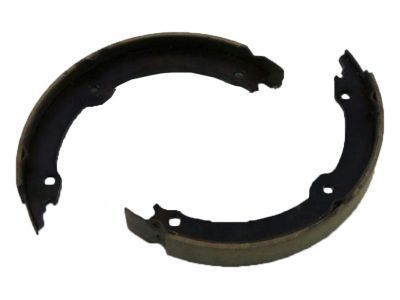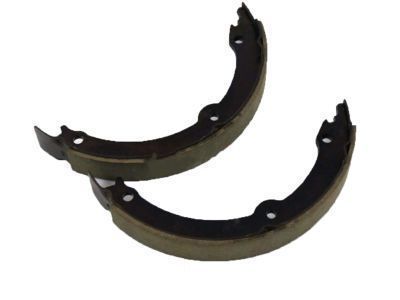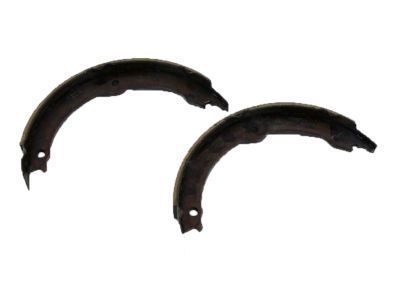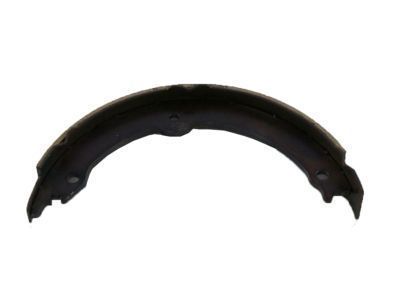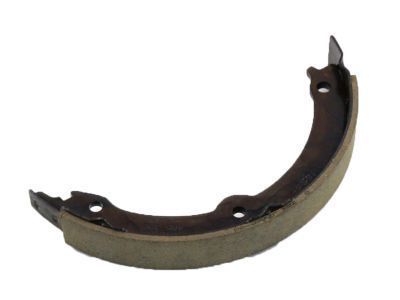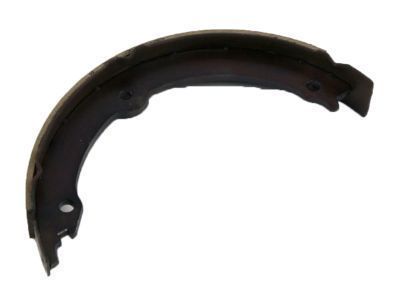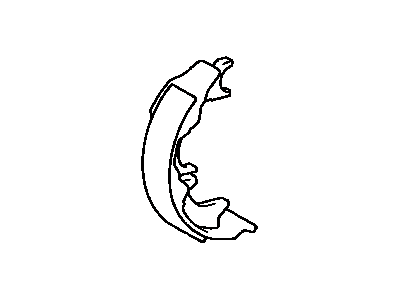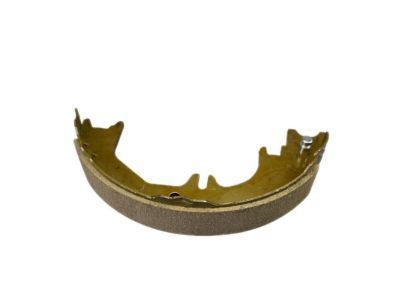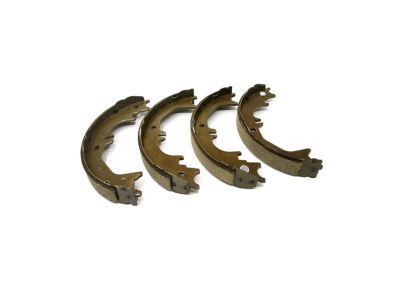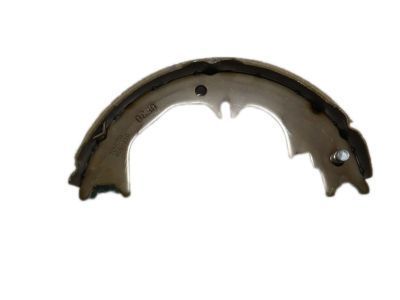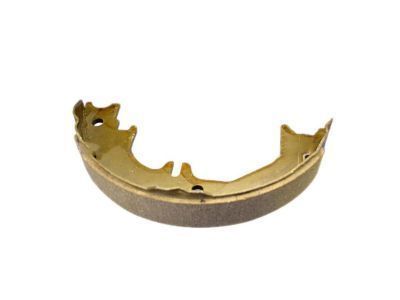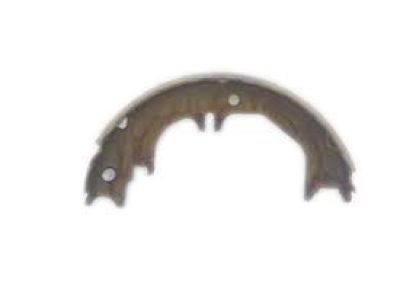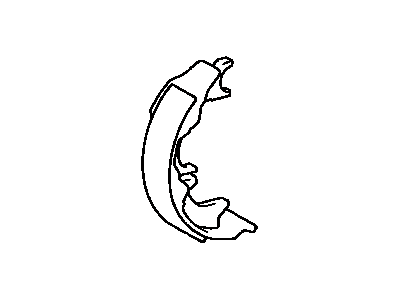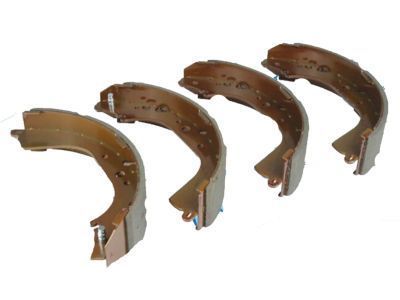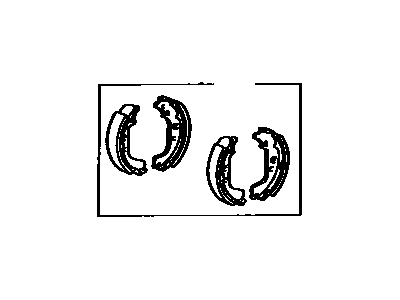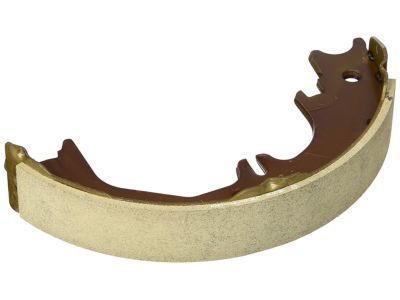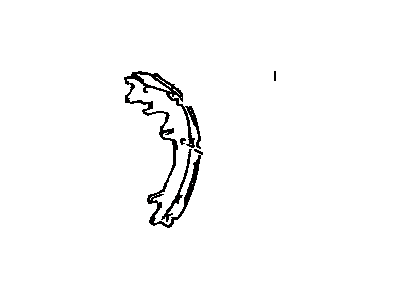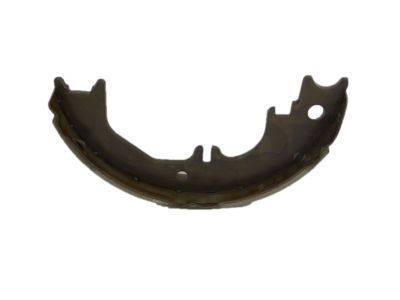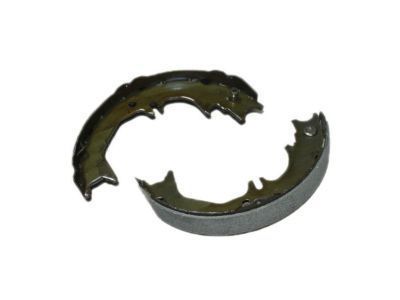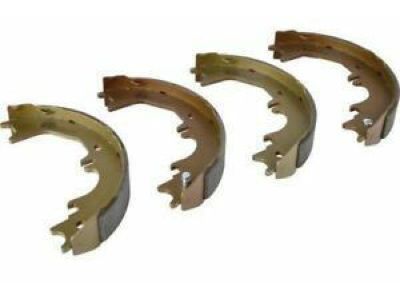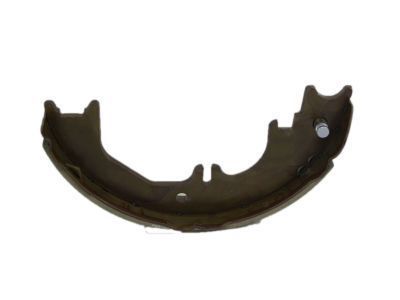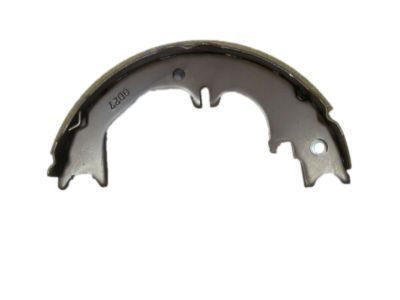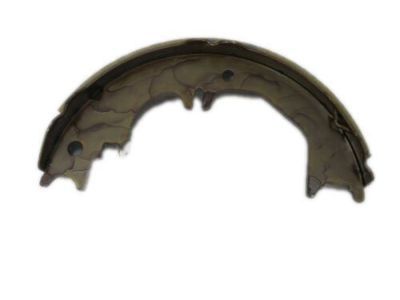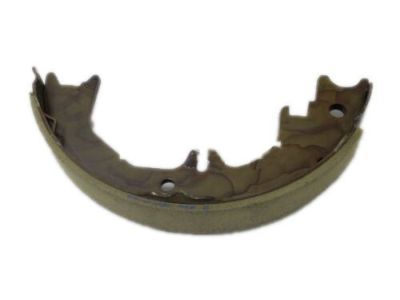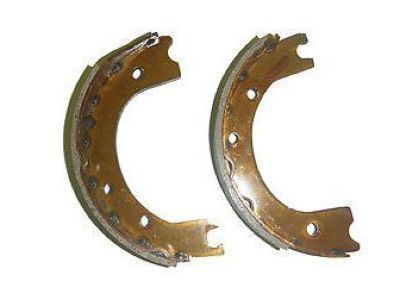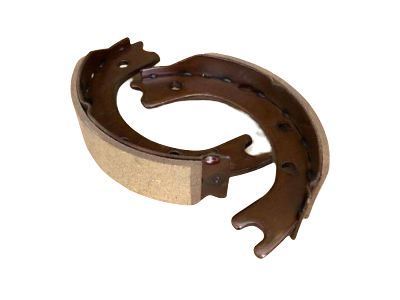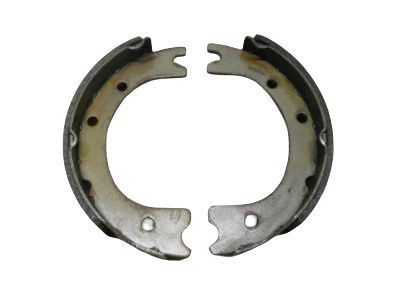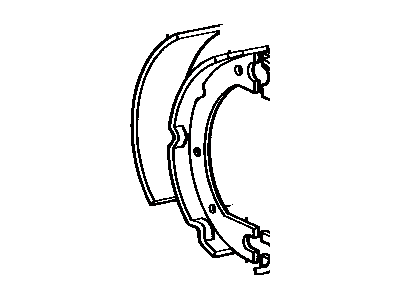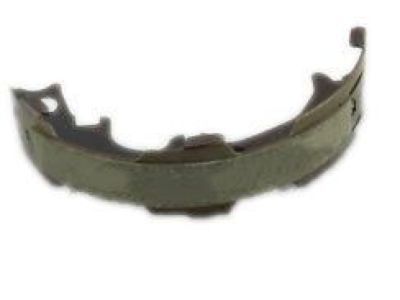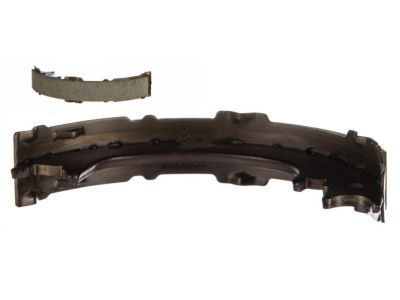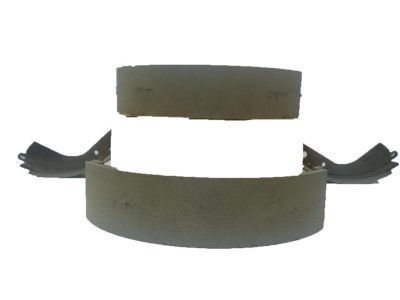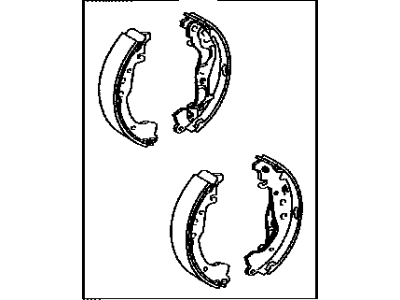

My Garage
My Account
Cart
Genuine Toyota Land Cruiser Parking Brake Shoe
Emergency Parking Brake Shoe- Select Vehicle by Model
- Select Vehicle by VIN
Select Vehicle by Model
orMake
Model
Year
Select Vehicle by VIN
For the most accurate results, select vehicle by your VIN (Vehicle Identification Number).
16 Parking Brake Shoes found
Toyota Land Cruiser Shoe Assembly, Parking Brake, LH
Part Number: 46530-34010$31.88 MSRP: $44.56You Save: $12.68 (29%)Ships in 1 Business DayToyota Land Cruiser Shoe Assembly, Parking Brake, RH Or Center
Part Number: 46540-60050$45.92 MSRP: $64.19You Save: $18.27 (29%)Ships in 1-3 Business DaysToyota Land Cruiser Shoe Assembly, Parking Brake, LH
Part Number: 46550-60060$45.33 MSRP: $63.36You Save: $18.03 (29%)Ships in 1-3 Business DaysToyota Land Cruiser Shoe Assembly, Parking Brake, LH
Part Number: 46580-60050$45.92 MSRP: $64.19You Save: $18.27 (29%)Ships in 1-3 Business DaysToyota Land Cruiser Rear Brake Shoe Kit
Part Number: 04495-60010$90.26 MSRP: $127.23You Save: $36.97 (30%)Ships in 1-3 Business DaysToyota Land Cruiser Shoe Assembly, Parking Brake, LH
Part Number: 46550-60040$36.52 MSRP: $51.05You Save: $14.53 (29%)Ships in 1-3 Business DaysToyota Land Cruiser Shoe Assembly, Parking Brake, RH Or Center
Part Number: 46540-60030$39.02 MSRP: $54.53You Save: $15.51 (29%)Ships in 1-3 Business DaysToyota Land Cruiser Shoe Assembly, Parking Brake, RH Or Center
Part Number: 46540-60031$45.92 MSRP: $64.19You Save: $18.27 (29%)Ships in 1-3 Business DaysToyota Land Cruiser Shoe Assembly, Parking Brake, LH
Part Number: 46580-60030$39.02 MSRP: $54.53You Save: $15.51 (29%)Ships in 1-3 Business DaysToyota Land Cruiser Shoe Assembly, Parking Brake, LH
Part Number: 46580-60031$45.92 MSRP: $64.19You Save: $18.27 (29%)Ships in 1 Business DayToyota Land Cruiser Shoe Assembly, Parking Brake, LH
Part Number: 46550-60041$45.33 MSRP: $63.36You Save: $18.03 (29%)Ships in 1 Business DayToyota Land Cruiser Shoe Assembly, Parking Brake, RH Or Center
Part Number: 46550-60011$28.19 MSRP: $39.40You Save: $11.21 (29%)Toyota Land Cruiser Shoe Assembly, Parking Brake, RH Or Center
Part Number: 46550-60010$28.19 MSRP: $39.40You Save: $11.21 (29%)Ships in 1-3 Business DaysToyota Land Cruiser Shoe Assembly, Parking Brake, RH Or Center
Part Number: 46550-35020$28.19 MSRP: $39.40You Save: $11.21 (29%)Ships in 1-3 Business DaysToyota Land Cruiser Rear Brake Shoe Kit
Part Number: 04495-60060$90.26 MSRP: $127.23You Save: $36.97 (30%)Toyota Land Cruiser Rear Brake Shoe Kit
Part Number: 04495-60011$90.26 MSRP: $127.23You Save: $36.97 (30%)Ships in 1-3 Business Days
Toyota Land Cruiser Parking Brake Shoe
If you are in demand for superior quality and affordable OEM Toyota Land Cruiser Parking Brake Shoe, then shop with us! We own a wide range of the reduced-priced genuine Toyota Land Cruiser Parking Brake Shoe. You can purchase in confidence as all parts come with a manufacturer's warranty. Any issues with our products? No need to worry as we have a hassle-free return policy to guide you every step of the way.
Toyota Land Cruiser Parking Brake Shoe Parts Questions & Experts Answers
- Q: How to remove and install the parking brake shoes on Toyota Land Cruiser?A:Remove the Brake Disc and clean the parking brake assembly with brake system cleaner. Inspect the thickness of the lining material on the shoes; if it has worn down to 0.039 inch (1.0 mm) or less, replace the shoes. Unhook the parking brake shoe return springs from the anchor pin using a special brake spring tool for ease. Remove the shoe strut from between the shoes along with the spring assembly. Detach the rear shoe hold-down spring, then remove the rear shoe and adjuster. Disconnect the Parking Brake Cable from the lever and remove the front shoe after removing the front shoe hold-down spring. Spread the C-clip on the parking brake lever pivot pin with a screwdriver, then remove the lever, shim, and pin, transferring the parts to the new front shoe and crimping the C-clip to the pin with pliers, ensuring to use a new C-clip for reinstallation. Apply a thin coat of high-temperature grease to the shoe contact surfaces of the backing plate and to the threads and sliding portion of the adjuster. Connect the parking brake cable to the lever and mount the front shoe to the backing plate, installing the hold-down spring. Connect the tension spring to the lower ends of both shoes and install the adjuster. Position the rear shoe on the plate and install the hold-down spring, followed by the parking brake cable return spring to the rear shoe. Install the parking brake strut with the spring facing rearward between the two shoes, then install the shoe return springs. Install the brake disc and temporarily thread three of the wheel lug nuts onto the studs to hold the disc in place. Remove the hole plug from the brake disc and adjust the parking brake shoe clearance by turning the adjuster star wheel with a brake adjusting tool or screwdriver until the shoes contact the disc and the disc can't be turned, then back off the adjuster eight notches and install the plug. Install the torque plate, brake pads, and Brake Caliper, ensuring to tighten the bolts to the specified torque. Install the wheel and tighten the lug nuts to the specified torque. Pull up on the parking brake handle and count the number of clicks; it should be between four and five clicks, and if not, adjust the parking brake. To bed the shoes to the drum, drive the vehicle at approximately 30 mph on a dry, level road, pushing in on the parking brake release button and pulling up slightly on the lever with about 20 pounds of force, driving for 1/4-mile with the parking brake applied. Repeat this procedure two or three times, allowing the brakes to cool between applications.
Related Toyota Land Cruiser Parts
Browse by Year
2021 Parking Brake Shoe 2020 Parking Brake Shoe 2019 Parking Brake Shoe 2018 Parking Brake Shoe 2017 Parking Brake Shoe 2016 Parking Brake Shoe 2015 Parking Brake Shoe 2014 Parking Brake Shoe 2013 Parking Brake Shoe 2012 Parking Brake Shoe 2011 Parking Brake Shoe 2010 Parking Brake Shoe 2009 Parking Brake Shoe 2008 Parking Brake Shoe 2007 Parking Brake Shoe 2006 Parking Brake Shoe 2005 Parking Brake Shoe 2004 Parking Brake Shoe 2003 Parking Brake Shoe 2002 Parking Brake Shoe 2001 Parking Brake Shoe 2000 Parking Brake Shoe 1999 Parking Brake Shoe 1998 Parking Brake Shoe 1997 Parking Brake Shoe 1996 Parking Brake Shoe 1995 Parking Brake Shoe 1994 Parking Brake Shoe 1993 Parking Brake Shoe 1992 Parking Brake Shoe 1991 Parking Brake Shoe 1990 Parking Brake Shoe 1989 Parking Brake Shoe 1988 Parking Brake Shoe 1987 Parking Brake Shoe 1986 Parking Brake Shoe 1985 Parking Brake Shoe 1984 Parking Brake Shoe 1983 Parking Brake Shoe 1982 Parking Brake Shoe 1981 Parking Brake Shoe 1980 Parking Brake Shoe 1979 Parking Brake Shoe 1978 Parking Brake Shoe 1977 Parking Brake Shoe 1976 Parking Brake Shoe 1975 Parking Brake Shoe 1974 Parking Brake Shoe 1973 Parking Brake Shoe 1972 Parking Brake Shoe 1971 Parking Brake Shoe 1970 Parking Brake Shoe 1969 Parking Brake Shoe
